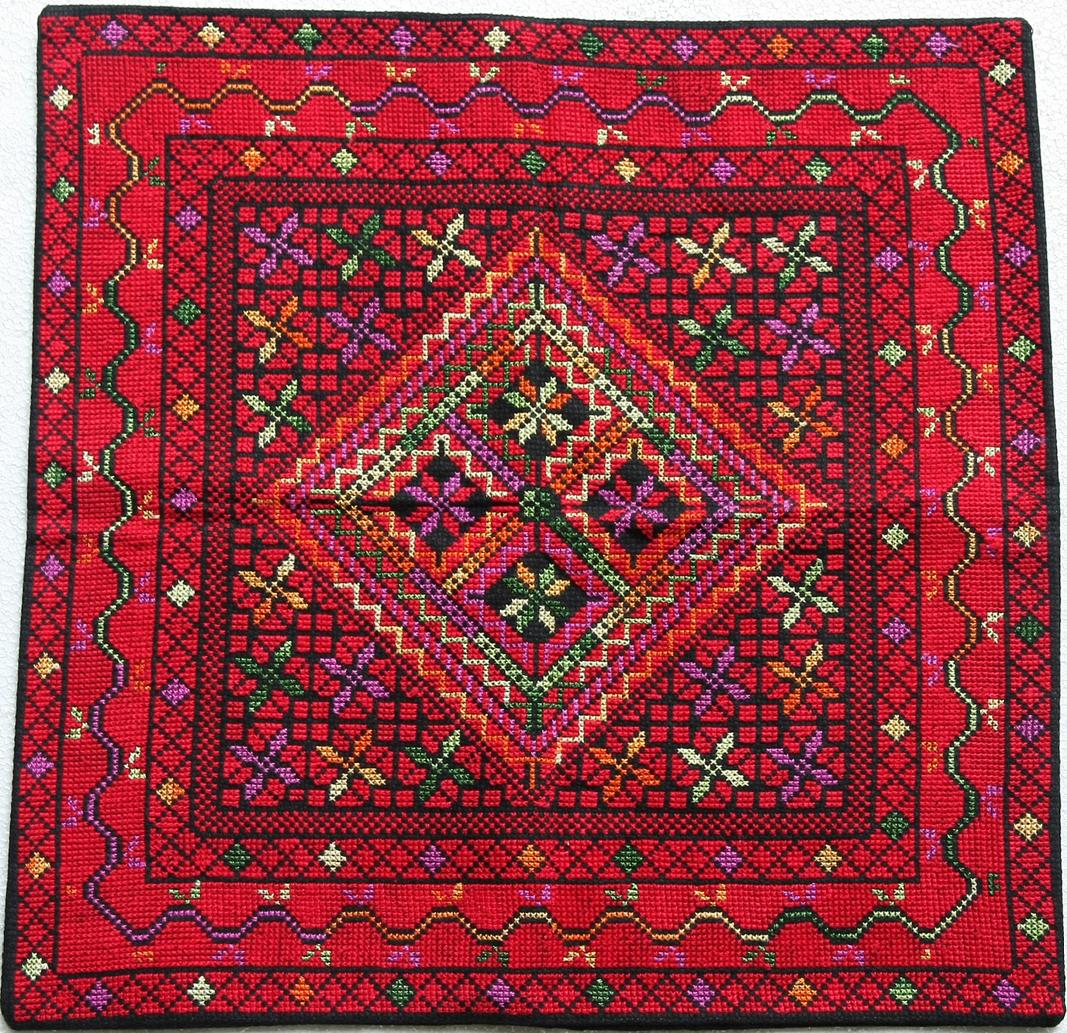The Beauty and Meaning of Palestinian Tatreez Art
Tatreez is a traditional Palestinian form of embroidery that uses cross-stitches and repeating motifs to create stunning patterns and designs on garments, accessories, and home decor. Tatreez is more than just a craft, however. It is also a way of preserving and expressing the rich and diverse culture, history, and identity of the Palestinian people.

The Origins and Evolution of Tatreez
Tatreez dates back to the ancient Canaanites, who inhabited the land of Palestine more than 3,000 years ago. They used natural materials such as wool, cotton, silk, and linen to weave and embroider their clothes, using colors derived from plants and minerals. The motifs and patterns they created were inspired by their surroundings, such as the flora and fauna, the sun and the moon, and the geometric shapes and symbols of their religion and mythology.
Over time, tatreez evolved and diversified, reflecting the influences of different civilizations and cultures that came into contact with Palestine, such as the Greeks, Romans, Byzantines, Arabs, Crusaders, Mongols, Ottomans, and British. Each region and village developed its own distinctive style and repertoire of motifs, which served as markers of identity and social status for the women who wore them. For example, the cypress tree motif was common in Gaza, symbolizing resilience and longevity, while the red color was dominant in Ramallah, representing vitality and courage.
Tatreez also became a means of resistance and solidarity for the Palestinian people, especially after the Nakba of 1948, when hundreds of thousands of Palestinians were expelled from their homes and lands by the Zionist forces. Many women who fled or were forced into refugee camps carried with them their embroidery skills and materials, which helped them cope with the trauma and hardship of displacement and occupation. They also began to incorporate new motifs and colors into their tatreez, such as the Palestinian flag, the map of Palestine, the keys of their lost homes, and the olive branches of peace and hope.

Today, tatreez is still practiced and cherished by Palestinian women and men, both in Palestine and in the diaspora. It is a way of honoring and celebrating their heritage, as well as asserting their identity and rights in the face of ongoing oppression and injustice. Tatreez is also a source of income and empowerment for many Palestinian artisans, who create and sell beautiful and unique products that showcase their creativity and craftsmanship.
The Art and Meaning of Tatreez
Tatreez is a complex and intricate art form that requires a lot of skill, patience, and precision. It is usually done by hand, using a needle and thread to make small cross-stitches on a fabric, following a grid or a pattern. The stitches can be arranged in different ways to create different effects, such as flat, raised, or counted. The motifs can be simple or elaborate, geometric or organic, symmetrical or asymmetrical, depending on the style and preference of the embroiderer.
The motifs and patterns of tatreez have different meanings and stories behind them, which are often related to the culture, history, and environment of the Palestinian people. Some of the most common and popular motifs are:
The star (نجمة), which represents the night sky, the cosmos, and the divine. It is also a symbol of harmony, balance, and unity, as well as a sign of protection and guidance.
The tree (شجرة), which represents the land, the nature, and the life of Palestine. It is also a symbol of growth, strength, and resilience, as well as a connection to the ancestors and the roots.
The flower (زهرة), which represents the beauty, diversity, and joy of Palestine. It is also a symbol of love, femininity, and fertility, as well as a celebration of the seasons and the cycles of life.
The bird (طائر), which represents the freedom, mobility, and spirit of Palestine. It is also a symbol of hope, peace, and transcendence, as well as a messenger of good news and blessings.
The eye (عين), which represents the vision, wisdom, and awareness of Palestine. It is also a symbol of protection, vigilance, and defiance, as well as a challenge to the evil eye and the enemies.
The colors of tatreez also have different meanings and associations, which vary depending on the region and the context. Some of the most common and popular colors are:
Red (أحمر), which represents blood, fire, and passion. It is also a symbol of courage, sacrifice, and resistance, as well as a sign of vitality and energy.
Green (أخضر), which represents the land, the plants, and the olive trees of Palestine. It is also a symbol of hope, renewal, and prosperity, as well as a sign of faith and Islam.
Black (أسود), which represents the night, the soil, and the mourning of Palestine. It is also a symbol of dignity, strength, and endurance, as well as a sign of resistance and defiance.
White (أبيض), which represents the light, the sky, and the peace of Palestine. It is also a symbol of purity, innocence, and wisdom, as well as a sign of harmony and unity.
Yellow (أصفر), which represents the sun, the wheat, and the joy of Palestine. It is also a symbol of warmth, generosity, and hospitality, as well as a sign of optimism and happiness.
The Beauty and Meaning of Palestinian Tatreez Art
Tatreez is a beautiful and meaningful art form that reflects the rich and diverse culture, history, and identity of the Palestinian people. It is also a way of preserving and expressing their heritage, as well as resisting and challenging the oppression and injustice they face. Tatreez is a testament to the creativity, skill, and resilience of the Palestinian artisans, who continue to create and share their stories and visions through their stitches. Tatreez is a treasure of Palestine, and a gift to the world.
